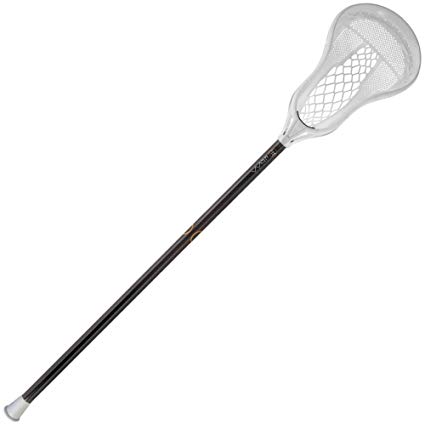The Top Lacrosse Shafts to Improve Your Game This YearThe Top Lacrosse Shafts to Improve Your Game This Year
Choosing the Right Length Lacrosse Shaft
When selecting a new lacrosse shaft, one of the most important considerations is getting the right length. Length can significantly impact your performance, especially depending on the position you play. Attackmen and midfielders generally opt for shorter shafts in the 30-42 inch range to allow for quicker stick handling and passing. Longer shafts from 52-72 inches are preferred for defensemen, providing extended reach for poke checks, checks and scooping up ground balls.
For attackmen and middies, 30-32 inch shafts are best for ball retention and tight stick work in traffic. 34-36 inches offers a balance of control and range for all-around play. 38-42 inches gives you a bit more reach on passes, shots and checks, while still allowing solid stick skills. Consider your height and arm length when picking length – a longer pole for a shorter player can be challenging to control. Go with the longest shaft you can handle well and don’t sacrifice ball handling.
Trying out different lengths is the best way to find your ideal fit. Work your way up or down in increments of 2 inches until you find your lacrosse stick “sweet spot.” Keep in mind high school and college rules regulate lacrosse shaft lengths. Getting the right length for your physique and position is vital so you can maximize your performance on the field with solid fundamentals. An ideal length lacrosse shaft empowers you to take your game to the next level.
Opting for Lightweight yet Durable Alloy Shaft Materials

When shopping for a new lacrosse shaft, considering the shaft material is key for finding the right balance of lightweight maneuverability and durability. Most shafts today are made from advanced metal alloys that provide an optimal strength-to-weight ratio.
Aluminum alloys like the Scandium used in Maverik’s MetaLite shafts offer a featherlight feel for quick stick work. The alloy enhances responsiveness while still delivering rugged performance. Scandium shafts boast heightened durability over pure aluminum with only a slight weight penalty.
Stronger alloy options like East Coast Dyes’ True Temper Titanium and Warrior’s Platinum alloy blend titanium and other metals to achieve an exceptionally robust but lightweight shaft. These shafts withstand heavy slashes and checks without sacrificing much heft.
For elite-level play, shafts made of high-grade composites like carbon fiber and composite resin promise the lightest weight while retaining strength. Brands like Epoch and Dragonfly use aerospace-grade carbon fiber for incredibly lightweight, dent-resistant shafts with unparalleled stiffness and responsive flex. However, carbon fiber can lack durability compared to metal alloys.
Consider your position and preferences when choosing material. Attackmen and middies may benefit most from ultra-light carbon for quick cuts, while defensemen might opt for a rugged but lightweight alloy for handling checks. Regardless of material, ensure the shaft has a solid warranty, as sidewall cracks and breaks do happen. With technology advancing, metal alloys and composites continue to push the boundaries of performance in lacrosse shaft materials.
While you can’t go wrong with proven alloy or composite shafts, trying out different materials can help discover your ideal balance of minimal weight and maximum toughness. An optimally lightweight yet durable shaft empowers you to play at your peak.
Considering a Textured Grip to Enhance Control

One customizable part of a new lacrosse shaft that can make a big difference in your performance is the grip texture and materials. The right grip improves hand control, allowing you to cradle, pass, catch, and shoot with confidence. Manufacturers offer various grip patterns, materials, and methods of attachment to suit each player’s preferences.
Standard lacrosse shaft grips feature molded or protruding textures along the handle to enhance friction and prevent slipping. More pronounced raised ridge and diamond patterns provide lots of tactile grip, while uniform pebbling offers a lower-profile texture. Try out different grip styles to find your ideal tactile feel.
Many companies also offer grips using novel materials for dampening vibrations. Maverik’s Grapple X grip incorporates a rubberized arthritis gel for extreme tackiness and shock absorption when cradling and checking. Brands like Epoch and Warrior use memory foam in grip inserts for a soft yet responsive feel that conforms to your hand.
For a custom feel, removable grip tape lets you tailor the texture. Traditional perforated lax tape, 3M hockey tape, and grippy cloth tennis racquet tape can all be wrapped over factory grips. Re-taping as needed is easy maintenance. Using contrasting colors also allows your lacrosse stick grip to stand out.
Proper installation helps grips last. Ensure all old tape is removed and the shaft is smooth and clean before applying new tape. Wrap tightly working up the shaft while maintaining 50% overlap between passes. Burnish down edges to seal tape.
With so many grip varieties available, experiment to discover which textures and materials optimize handling and shock absorption for your preferences. Dialing in the right lacrosse shaft grip gives you the confidence to maintain control in any on-field situation.
Selecting Shaft Flex and Stiffness Based on Preference
- 30-32 inches: Ideal for ball retention and tight stick work in traffic
- 34-36 inches: Offers a balance of control and range for all-around play
- 38-42 inches: Provides more reach for passes, shots, and checks while maintaining solid stick skills
Defensemen
Defensive players typically opt for longer shafts to maximize their reach and defensive capabilities. The recommended length range for defensemen is 52-72 inches. This extended length allows for:
- Improved poke checks
- Enhanced ability to perform defensive checks
- Better reach for scooping up ground balls
Is shaft length the only factor to consider? No, your height and arm length also play a role in determining the optimal shaft length. A longer pole might be challenging to control for shorter players, so it’s essential to find a balance between reach and maneuverability.
How can you find your ideal shaft length? The best approach is to try out different lengths, working your way up or down in 2-inch increments until you find your “sweet spot.” Remember to consider high school and college regulations when selecting your shaft length.

Lightweight Yet Durable Alloy Shaft Materials: Finding the Perfect Balance
When it comes to lacrosse shaft materials, striking the right balance between lightweight maneuverability and durability is key. Modern lacrosse shafts are crafted from advanced metal alloys that offer an optimal strength-to-weight ratio. Let’s examine some popular options:
Aluminum Alloys
Aluminum alloys, such as Scandium used in Maverik’s MetaLite shafts, provide a featherlight feel for quick stick work. These alloys offer:
- Enhanced responsiveness
- Improved durability compared to pure aluminum
- Minimal weight penalty
Titanium-Based Alloys
Stronger alloy options like East Coast Dyes’ True Temper Titanium and Warrior’s Platinum alloy blend titanium with other metals to achieve exceptional robustness without sacrificing weight. These shafts are known for:
- Withstanding heavy slashes and checks
- Maintaining a relatively light weight
- Providing excellent durability for defensive players
Carbon Fiber Composites
For elite-level play, high-grade composites like carbon fiber and composite resin offer the lightest weight while retaining strength. Brands like Epoch and Dragonfly utilize aerospace-grade carbon fiber to create shafts with:

- Incredibly low weight
- Exceptional dent resistance
- Unparalleled stiffness and responsive flex
Can carbon fiber shafts match the durability of metal alloys? While carbon fiber offers superior performance in many aspects, it may lack the long-term durability of metal alloys, especially for defensive players who encounter frequent checks.
How do you choose the right material for your position? Consider your playing style and preferences:
- Attackmen and midfielders may benefit most from ultra-light carbon fiber for quick cuts and agile movements
- Defensemen might prefer a rugged but lightweight alloy to handle checks and provide extended reach
Regardless of the material you choose, ensure the shaft comes with a solid warranty, as sidewall cracks and breaks can occur during intense play.
Enhancing Control: The Importance of Textured Grips
A often overlooked yet crucial aspect of lacrosse shaft performance is the grip texture and material. The right grip can significantly improve hand control, allowing for confident cradling, passing, catching, and shooting. Let’s explore the various grip options available:

Standard Grip Textures
Most lacrosse shafts feature molded or protruding textures along the handle to enhance friction and prevent slipping. Common grip patterns include:
- Raised ridge patterns for pronounced tactile grip
- Diamond patterns for enhanced traction
- Uniform pebbling for a lower-profile texture
Innovative Grip Materials
Many manufacturers are incorporating novel materials to improve grip performance and comfort:
- Maverik’s Grapple X grip: Uses a rubberized arthritis gel for extreme tackiness and shock absorption
- Epoch and Warrior: Utilize memory foam in grip inserts for a soft yet responsive feel that conforms to your hand
Customizable Grip Options
For players seeking a personalized feel, removable grip tape offers a customizable solution:
- Traditional perforated lacrosse tape
- 3M hockey tape
- Grippy cloth tennis racquet tape
These options allow you to tailor the texture and replace the grip as needed. Using contrasting colors can also help your lacrosse stick stand out on the field.

How do you ensure your grip lasts? Proper installation is key. Remove all old tape and clean the shaft surface thoroughly before applying a new grip. This will help maximize grip longevity and performance.
Essential Lacrosse Shaft Features for Defensive Players
Defensive players have unique requirements when it comes to lacrosse shafts. Let’s examine the key features that can enhance a defender’s performance on the field:
Extended Length
As mentioned earlier, defensive players benefit from longer shafts, typically ranging from 52 to 72 inches. This extended length provides:
- Improved reach for defensive checks
- Better leverage when battling for ground balls
- Enhanced ability to disrupt opponent’s passes and shots
Durability and Strength
Defensive players subject their shafts to more physical contact and stress. Therefore, prioritizing durability is crucial. Look for shafts that offer:
- High-strength alloys or carbon fiber composites
- Reinforced walls to resist denting and bending
- Impact-resistant finishes to withstand repeated checks
Grip Placement
Defensive players often need to adjust their hand placement quickly. Consider shafts with:

- Extended grip areas for versatile hand positioning
- Tactile indicators or textured zones to aid in rapid hand adjustments
Weight Distribution
A well-balanced shaft can improve a defender’s ability to make quick movements and precise checks. Look for shafts that offer:
- Even weight distribution along the length of the shaft
- Slightly heavier end caps for improved leverage during checks
How can defensive players maximize the lifespan of their shafts? Regular maintenance is key. Inspect your shaft for dents or cracks after each game, and consider rotating your grip area to distribute wear evenly.
Carbon Fiber vs. Metal Alloys: A Performance Comparison
The debate between carbon fiber and metal alloy lacrosse shafts continues to evolve as technology advances. Let’s compare these materials across several key performance factors:
Weight
Carbon fiber shafts typically have the edge in terms of weight:
- Carbon fiber: Extremely lightweight, often weighing 25-30% less than metal alloys
- Metal alloys: Heavier, but advanced alloys are continuously reducing weight
Durability
Metal alloys generally offer superior durability:

- Carbon fiber: Resistant to dents but can crack or shatter under extreme impact
- Metal alloys: More resistant to catastrophic failure, may dent but rarely break completely
Stiffness and Flex
Carbon fiber provides unique performance characteristics:
- Carbon fiber: Offers a stiffer feel with more responsive flex, enhancing shot power and accuracy
- Metal alloys: Generally less stiff, with a more uniform flex pattern
Temperature Sensitivity
Environmental factors can affect performance:
- Carbon fiber: Less affected by temperature changes, maintaining consistent feel in various conditions
- Metal alloys: May feel colder in low temperatures, potentially affecting grip and comfort
Cost
Price points vary between materials:
- Carbon fiber: Generally more expensive due to advanced manufacturing processes
- Metal alloys: Often more affordable, with a wide range of options at different price points
Which material is best for you? The choice between carbon fiber and metal alloys depends on your playing style, position, and personal preferences. Attackmen and midfielders might prefer the lightweight responsiveness of carbon fiber, while defenders may opt for the rugged durability of metal alloys.

Top Lacrosse Shaft Brands to Consider in 2024
With numerous options available, choosing the right lacrosse shaft brand can be overwhelming. Here’s a roundup of some top brands to consider this year:
Maverik Lacrosse
Known for innovation and performance, Maverik offers:
- MetaLite shafts featuring Scandium alloy for lightweight durability
- Advanced grip technologies like the Grapple X
- Options for all positions and skill levels
East Coast Dyes (ECD)
ECD has gained popularity with their:
- True Temper Titanium shafts for exceptional strength
- Carbon Pro shafts offering lightweight performance
- Customizable options for personalized feel
Epoch Lacrosse
Focusing on advanced materials, Epoch provides:
- High-grade carbon fiber shafts for elite performance
- Innovative flex and release point technologies
- Options for both field and box lacrosse
Warrior Lacrosse
A long-standing brand in the sport, Warrior offers:
- Platinum alloy shafts for durability and performance
- A range of options from entry-level to professional grade
- Shafts designed for specific positions and playing styles
StringKing
Known for their precision-engineered products, StringKing features:

- Metal and composite shaft options
- Innovative grip designs for enhanced control
- Performance-focused shafts for competitive players
How do you choose the right brand for you? Consider factors such as your budget, playing style, and specific performance needs. Don’t hesitate to try out different brands to find the one that feels best in your hands and complements your game.
Maintaining and Caring for Your Lacrosse Shaft
Proper maintenance can significantly extend the lifespan of your lacrosse shaft and ensure consistent performance. Here are some essential tips for caring for your equipment:
Regular Inspection
Make it a habit to inspect your shaft after each use:
- Check for dents, cracks, or signs of wear
- Examine the grip area for degradation or loosening
- Ensure all screws and end caps are secure
Cleaning
Keep your shaft clean to maintain its performance:
- Wipe down the shaft with a damp cloth after each use
- Use mild soap and water for deeper cleaning when needed
- Avoid harsh chemicals that could damage the shaft’s finish or grip
Storage
Proper storage helps prevent damage when your shaft is not in use:

- Store in a cool, dry place away from direct sunlight
- Use a lacrosse stick bag to protect from scratches and impacts
- Avoid leaving your stick in extreme temperatures, such as in a hot car
Grip Maintenance
Keep your grip in top condition for optimal control:
- Replace grip tape regularly, especially if it becomes worn or loses tackiness
- Clean built-in grips with a damp cloth to remove dirt and sweat
- Consider rotating your hand position to distribute wear evenly
Addressing Damage
If you notice any damage, take action promptly:
- Small dents in metal shafts can often be gently worked out
- Replace the shaft if you notice any cracks or severe structural damage
- Consult with a professional or the manufacturer for repair options on high-end shafts
How often should you replace your lacrosse shaft? The lifespan of a shaft varies depending on usage, material, and care. However, most players find they need to replace their shaft every 1-2 seasons with regular use. Pay attention to your shaft’s performance and condition to determine when it’s time for a replacement.

By following these maintenance tips, you can ensure your lacrosse shaft remains in top condition, providing consistent performance throughout its lifespan. Remember, a well-maintained shaft not only performs better but also contributes to safer play on the field.
Choosing the Right Length Lacrosse Shaft
When selecting a new lacrosse shaft, one of the most important considerations is getting the right length. Length can significantly impact your performance, especially depending on the position you play. Attackmen and midfielders generally opt for shorter shafts in the 30-42 inch range to allow for quicker stick handling and passing. Longer shafts from 52-72 inches are preferred for defensemen, providing extended reach for poke checks, checks and scooping up ground balls.
For attackmen and middies, 30-32 inch shafts are best for ball retention and tight stick work in traffic. 34-36 inches offers a balance of control and range for all-around play. 38-42 inches gives you a bit more reach on passes, shots and checks, while still allowing solid stick skills. Consider your height and arm length when picking length – a longer pole for a shorter player can be challenging to control. Go with the longest shaft you can handle well and don’t sacrifice ball handling.
Trying out different lengths is the best way to find your ideal fit. Work your way up or down in increments of 2 inches until you find your lacrosse stick “sweet spot.” Keep in mind high school and college rules regulate lacrosse shaft lengths. Getting the right length for your physique and position is vital so you can maximize your performance on the field with solid fundamentals. An ideal length lacrosse shaft empowers you to take your game to the next level.
Opting for Lightweight yet Durable Alloy Shaft Materials

When shopping for a new lacrosse shaft, considering the shaft material is key for finding the right balance of lightweight maneuverability and durability. Most shafts today are made from advanced metal alloys that provide an optimal strength-to-weight ratio.
Aluminum alloys like the Scandium used in Maverik’s MetaLite shafts offer a featherlight feel for quick stick work. The alloy enhances responsiveness while still delivering rugged performance. Scandium shafts boast heightened durability over pure aluminum with only a slight weight penalty.
Stronger alloy options like East Coast Dyes’ True Temper Titanium and Warrior’s Platinum alloy blend titanium and other metals to achieve an exceptionally robust but lightweight shaft. These shafts withstand heavy slashes and checks without sacrificing much heft.
For elite-level play, shafts made of high-grade composites like carbon fiber and composite resin promise the lightest weight while retaining strength. Brands like Epoch and Dragonfly use aerospace-grade carbon fiber for incredibly lightweight, dent-resistant shafts with unparalleled stiffness and responsive flex. However, carbon fiber can lack durability compared to metal alloys.
Consider your position and preferences when choosing material. Attackmen and middies may benefit most from ultra-light carbon for quick cuts, while defensemen might opt for a rugged but lightweight alloy for handling checks. Regardless of material, ensure the shaft has a solid warranty, as sidewall cracks and breaks do happen. With technology advancing, metal alloys and composites continue to push the boundaries of performance in lacrosse shaft materials.
While you can’t go wrong with proven alloy or composite shafts, trying out different materials can help discover your ideal balance of minimal weight and maximum toughness. An optimally lightweight yet durable shaft empowers you to play at your peak.
Considering a Textured Grip to Enhance Control

One customizable part of a new lacrosse shaft that can make a big difference in your performance is the grip texture and materials. The right grip improves hand control, allowing you to cradle, pass, catch, and shoot with confidence. Manufacturers offer various grip patterns, materials, and methods of attachment to suit each player’s preferences.
Standard lacrosse shaft grips feature molded or protruding textures along the handle to enhance friction and prevent slipping. More pronounced raised ridge and diamond patterns provide lots of tactile grip, while uniform pebbling offers a lower-profile texture. Try out different grip styles to find your ideal tactile feel.
Many companies also offer grips using novel materials for dampening vibrations. Maverik’s Grapple X grip incorporates a rubberized arthritis gel for extreme tackiness and shock absorption when cradling and checking. Brands like Epoch and Warrior use memory foam in grip inserts for a soft yet responsive feel that conforms to your hand.
For a custom feel, removable grip tape lets you tailor the texture. Traditional perforated lax tape, 3M hockey tape, and grippy cloth tennis racquet tape can all be wrapped over factory grips. Re-taping as needed is easy maintenance. Using contrasting colors also allows your lacrosse stick grip to stand out.
Proper installation helps grips last. Ensure all old tape is removed and the shaft is smooth and clean before applying new tape. Wrap tightly working up the shaft while maintaining 50% overlap between passes. Burnish down edges to seal tape.
With so many grip varieties available, experiment to discover which textures and materials optimize handling and shock absorption for your preferences. Dialing in the right lacrosse shaft grip gives you the confidence to maintain control in any on-field situation.
Selecting Shaft Flex and Stiffness Based on Preference
One of the most important factors in choosing a new lacrosse shaft is finding the optimal flex profile and stiffness that suits your playing style. Manufacturers today offer shafts with varying degrees of flex, from rigid to extremely whippy, so you can match performance to your needs.
Stiffer, low-flex shafts provide exceptional stability for more accurate passing and shooting. With less flex, you get more power transfer and responsiveness on shots, ideal for attackmen and middies. However, minimal flex can lead to increased vibrations and fatigue during frequent checks.
Higher flex shafts incorporate more bend and whip, preferred by defensemen for scooping up ground balls. Increased flex helps absorb impact from checks, reducing sting and arm fatigue. More flex also loads up power on shots, adding velocity. Too much whip can make catching difficult, so finding the right blend is key.
Engineered flex zones and composite layering give today’s shafts a mix of stiffness and focused flex. For example, Epoch shafts concentrate flex in the upper handle for clearing checks, while maintaining stability in the lower parts for shooting.
Trying out shafts across the flex spectrum is the best test. While personal preference rules, some players new to lacrosse may want to start with a medium-stiff option as a happy middle ground while developing skills. An ideal flex profile aligns with your position and gives you the desired blend of ball control, shooting accuracy, and check dampening.
Dialing in a lacrosse shaft’s stiffness and flex to match your playing style is a nuanced but impactful way to boost your performance.
Picking Eye-Catching Colors and Designs to Stand Out

Along with performance factors, choosing a lacrosse shaft with stylish colors and graphics is a fun way to express your personality and stand out on the field. With so many bold designs and colorways available today, you can easily find a uniquely you shaft.
Bold metallic colors like copper, rose gold, electric blue, and candy apple red make a statement. Two-tone fades and splatter paint effects offer cool visual flair. For schools with stricter rules, engraving your name or number into a neutral shaft adds subtle personalization.
On team orders, getting matching shafts in your squad’s colors builds unity. Maverik’s customizable Rabil 2 shafts let you design your dream color combo. StringKing also offers NHL-inspired designs to rep your favorite hockey team.
Limited edition shafts with exciting graphics like Warrior’s galaxy print or epoch’s feather fades turn heads. Keep an eye out for limited drops of new colorways and patterns.
Don’t overlook selecting complementary mesh and stringing colors to complete your whole lacrosse stick aesthetic. A blue shaft pops with white hard mesh and yellow shooters. Lime green and purple ombre strings make black shafts come alive. Taking the time to color coordinate your entire setup results in a stylish signature look.
While performance should still come first when choosing a new shaft, expressing yourself through color and graphics boosts motivation and confidence. When you love the way your gear looks, you’re excited to get on the field and play your best. Dialing in a cool lacrosse shaft colorway and design you identify with gives your game a personal touch of flair.
Investing in a Reputable Brand Known for Quality

When evaluating which lacrosse shaft to buy, going with a proven brand with a reputation for quality and innovation is recommended. Trusted manufacturers like Maverik, STX, and Warrior consistently deliver high-performing and durable shafts worth the investment.
These leading brands devote extensive research and development towards advancing shaft technology. Maverik’s MetaFlex and STX’s PowerShaft technologies focus on optimizing flex and feel by strategically manipulating shaft geometry and wall thickness. Warrior leverages insights from parent company New Balance to enhance grip and dampening.
Reputable brands rigorously test prototypes under real game strains to ensure robust and reliable performance. Maverik’s shafts undergo over 1 million load cycles to validate durability. Brands also leverage feedback from elite players to refine designs.
In addition to performance, established brands use quality materials and construction. STX shafts feature consistent premium composite layering and space-age metals. Step-down wall technology improves durability at stress points. Maverik shafts boast aircraft-grade aluminum and ultra-strong scandium alloys.
Customer service is another perk of big brands. Most offer at least a 1-year warranty against defects, with STX providing up to a 10-year warranty. Replacing damaged shafts protects your investment.
While lesser-known brands can offer cost savings, you risk getting an unreliable and cheaply made product. The smart play is investing in a lacrosse shaft from a leading brand you can trust will deliver lasting and dependable performance.
Comparing Prices to Find Deals on Top Lacrosse Shafts
While lacrosse shafts from the top brands carry a bit of a premium, taking the time to compare prices at different retailers can help you score a great deal. With some smart shopping, you can find sales on elite shafts and avoid paying full price.
Online lacrosse specialty stores like LacrosseMonkey, Lax.com, and EastCoastDyes.com will regularly run site-wide sales on all gear. Signing up for their email lists gives you a heads up on upcoming deals. The best savings come around at major holiday sales events like Black Friday, Cyber Monday, Labor Day, and Memorial Day.
Check manufacturer websites directly as well, as many will discount older model year shafts significantly. For example, last year’s STX Surgeon scanner shaft can be had for hundreds off direct from STX.com. Following lacrosse brands on social media can provide early alerts for flash sales and promos too.
Don’t neglect local lacrosse shops either. Brick and mortar stores often have flexibility to negotiate pricing in person, especially on last year’s shafts. Developing a relationship with a knowledgeable local lacrosse retailer pays dividends when deal hunting.
With lacrosse gear pricing relatively static most of the year, a little patience and planning lets you time your shaft purchase for optimal savings. Doing research ahead of time makes grabbing deals on elite shafts when they arise much easier. Investing in a coveted high-performance shaft without overspending is achievable with smart and thorough price comparisons.
Reading Reviews Before Buying to Ensure a Good Fit

Before deciding on a new lacrosse shaft, taking the time to read through customer reviews on sites like LacrosseMonkey.com helps provide key insights you won’t find on the box. Fellow players reviewing shafts can highlight potential pros and cons to ensure you make the right selection.
Reviews allow you to gather feedback on how a shaft actually performs for real-world players. You can get a sense of stiffness and flex quality beyond marketing hype. Users often compare to previous shaft models you may be familiar with as well.
You can also learn about durability over extended use. Reviews that mention cracking or chipping after only a few games or seasons indicate quality issues. Several reviews referencing broken end caps or rattling handles are also red flags.
Additionally, lacrosse shaft reviews describe how particular shaft features work in practice. You can learn if textured grips actually enhance feel or are just gimmicky. Comments on improved shot speed help you understand the impact of flex profiles as well.
Reviews also highlight considerations that may not work for everyone. For example, short middies may find some attack length shafts still too long in reviews. Goalies note issues with shaft shapes interfering with saves too. This lets you anticipate potential fit issues.
Taking 10 minutes to read multiple reviews gives you a wealth of crowd-sourced insights. You’ll feel far more confident you selected the right lacrosse shaft for your preferences and playing style by leveraging the experience of fellow players who have already put gear through the wringer.
Upgrading from Beginner to Intermediate and Advanced Shafts

As your lacrosse skills progress, upgrading to higher-performing intermediate and advanced shafts is a great way to take your play to the next level. Stepping up from a basic beginner shaft offers noticeable improvements in key areas.
Intermediate shafts from brands like STX and Maverik use higher grade alloys and improved construction to increase durability and decrease weight. For example, the Maverik Kinetik has an extended lightweight scandium handle for solid feel on cradling and checking. STEP technology reinforces stress points prone to cracking.
Intermediate shafts also incorporate more refined flex profiles to improve handling and shooting. Strategic carbon layering boosts responsiveness while remaining stiff for accuracy. Expect a more crisp release and greater hold on passes moving from a beginner to intermediate shaft.
Advanced shafts meant for elite play feature the most cutting-edge materials and engineering. Shafts like the Epoch Dragonfly 7 use aerospace carbon fiber to achieve incredibly light weight and unprecedented strength. The advanced 12-sided design further optimizes shot speed and accuracy.
While beginner shafts focus just on basic functionality, intermediate and advanced shafts deliver measurable performance benefits you’ll instantly feel on the field. Your skills deserve gear engineered to match your developing abilities. Upgrading shafts as your game improves ensures your equipment always allows you to play to your full potential.
Getting Properly Sized Shafts for Youth, Women’s, and Men’s Lacrosse
When selecting a new lacrosse shaft, it’s important to consider your age and gender to ensure proper sizing. Youth, women’s, and men’s lacrosse all require shafts engineered to appropriately match player physiques and skills.
For youth players, lightweight composite or alloy shafts from brands like STX and Maverik are sized down to accommodate smaller statures. Youth shafts range from 30-60 inches for various positions. Measure your child’s height and arm span to dial in fit.
Women’s lacrosse shafts are optimized for female athletes. thinner handles improve grip, while specialized flex profiles boost ball control. legal women’s shaft lengths range from 35.5-43.25 inches. Brands like STX design shafts specifically contoured for women’s hands.
Standard men’s lacrosse shafts cater to male physiques, with lengths from 40-72 inches. Wider shaft diameters and more rigid constructions account for greater strength. Advanced carbon shafts from Warrior and Epoch suit the hard checks of boy’s lacrosse.
Trying out gender-specific shafts ensures proper weight, handling, and durability. Don’t make older kids or women use ill-fitting men’s shafts that can sacrifice performance and safety. Proper sizing aligned with your age and gender allows you to perform at your peak.
With lacrosse participation growing, brands now offer a range of shafts tailored for youth, women, and men. Investing in a correctly sized shaft designed for your needs empowers you to take the field with confidence.
Favoring Stalwart Brands Like Maverik, STX, and Warrior

When selecting a new lacrosse shaft, favoring leading brands with a long history of innovative gear like Maverik, STX, and Warrior is a safe bet. These stalwart companies consistently deliver high-end shafts packed with the latest tech.
Maverik, under the Bauer Hockey umbrella, leverages the latest metals expertise for shafts like the Kinetik and Union, precision engineered for exceptional lightness and durability. Patented TruCurve technology optimizes flex. Maverik also produces the trusted Titan and Wonderboy lines.
Syracuse stalwart STX offers pro-level shafts like the Surgeon and Stallion crafted with robust advanced alloys and stepped-wall designs. Carbon Pro shafts incorporate multidirectional carbon fiber for elite performance. Sci-Ti and Cell 3 shafts started a revolution in the early 2000s.
Warrior serves up pro-caliber shafts like the Platinum Ti and Evo Pro X with titanium alloys and tactical kick-point flex zones. Brands acquired like Brine and Cascade leverage Warrior’s resources. The iconic Titan and Titan Pro set the standard for advanced shafts years ago.
Along with field-tested performance, these major brands also provide quality construction and warranties to protect your investment. When upgrade time comes, you can’t go wrong with a new shaft from one of the powerhouse lacrosse brands.
Customizing Flex and Handle Shape for Personalized Feel

One way to make a new lacrosse shaft uniquely your own is leveraging customization technologies that allow tailoring flex and handle shape to your exact preferences. Brands like Epoch and StringKing now offer custom shafts for a truly personalized fit.
Epoch’s custom lacrosse shafts let you modify the specific carbon fiber composition to engineer your ideal flex profile. Configure carbon directionality and layering in different zones to enhance stiffness for checking or improve whip for ground balls. Dial in the precise flex levels you desire in a high-performance carbon fiber shaft.
StringKing’s custom shafts use adjustable metal widgets let you augment the handle shape for ideal ergonomic fit. Elongate or fatten grip areas and taper transitions. Adapt the shape over time as your hands and preferences evolve.
Maverik’s customizable Rabil 2 graphic shafts also allow customizing colorways and engraving. STX’s Stallion 500 Enduraform shafts can be molded permanently when heated to match your grip.
While off-the-shelf shafts work for most, customization delivers a truly one-of-a-kind shaft meeting your exact needs. The personalized lacrosse sticks tailored just for you inspire confidence to play your absolute best game.
Maintaining Gear by Taping or Replacing Worn Grips
Taking care of your lacrosse shaft by replacing worn grip tape or grips helps maintain peak performance. As gear gets banged up from use, re-taping and grip upgrades keep handles feeling fresh.
Over time, grip tape wears down, smoothing out texture that provides crucial grip. Re-wrapping shafts with fresh grip tape restores tactile friction. Use a sharp blade to carefully remove frayed old tape without scratching shafts. For best grip, wrap firmly overlapping about 50% of the width each pass.
Factory molded grips also flatten and smooth over a season or two diminishing function. Upgrading to new replacement grips like Lizards Skins, Lizard Skins, and Maverik M2 renews grip texture and shape. Clean shafts thoroughly and use hair dryers to warm glue for easy install.
Routinely inspect end caps and handles for cracks as well. Replace damaged parts right away before breaks worsen and shafts become unsafe. Remove old tape and debris from cracks before using superglue or epoxy for minor repairs.
Take time between games to clean entire shafts with mild soap water and microfiber cloths too. This prevents dirt buildup which degrades performance.
Well-maintained gear performs better and lasts longer. Keep shafts fresh with new tape and replacement parts when needed. Proper lacrosse shaft care protects your investment while ensuring peak play every time you take the field.
Shopping End-of-Season Sales for the Best Discounts

One of the best opportunities to save money on coveted lacrosse shafts is taking advantage of end-of-season clearance sales. Retailers deeply discount gear around August and September as they make room for new models.
Check websites of major lacrosse retailers like LacrosseMonkey, Lax.com, and Dick’s Sporting Goods throughout the summer for establishing deals on last year’s shafts. As the new model year approaches, sales can slash 40-50% or more off original prices on discontinued but still high-performing shafts.
Wait until the peak of Back to School sales in late August for rock bottom prices. Limited sizing and color options will exist as stock dwindles, but major savings make compromising worthwhile. Set email alerts so you don’t miss short-lived doorbuster deals.
Hit up local lacrosse pro shops during end of summer closeouts as well. Smaller retailers are often flexible on negotiating steeper discounts on remaining inventory in person as storage space tightens.
Consider buying a few shafts if budget allows, as having backups avoids mid-season catastrophes should primary shafts break or crack. As long as technology improvements are minor, last year’s shafts still deliver elite performance.
With some strategic timing and savvy shopping, you can snag an excellent lacrosse shaft at a fraction of the price by pouncing on deals at the end of the lacrosse season. Off-season sales offer huge savings on gear.
Consulting Coaches, Teammates, Forums for Advice

Before selecting a new lacrosse shaft, consult coaches, teammates, lacrosse forums, and other knowledgeable sources to gather insights and advice. Tapping into the experience of fellow players and experts helps ensure you make an informed decision.
Discuss your playing style and preferences with your coach to get their shaft recommendations for optimal performance. Coaches have seen a variety of gear in action and know how to match shafts to your needs. Ask about sizing, flex, weight, and other factors to consider.
Veteran teammates who have tried many shafts can provide comparative reviews to help you narrow down choices too. Get perspectives on durability, shooting, checking, and handling for real world feedback. Upperclassmen may let you test their old shafts.
Don’t overlook online lacrosse communities as a resource either. Subreddits like r/lacrosse and forums like LacrosseForums.com have endless discussion comparing gear. Search for your shortlist to find in-depth evaluations. Ask questions as well.
The more data points you gather from those in the know, the better informed you’ll be to find the perfect shaft fit. Weigh all the input and go with the consensus pick among recommendations tailored to your needs. Choosing a shaft can be daunting but tapping into the lacrosse community’s collective wisdom simplifies the process.